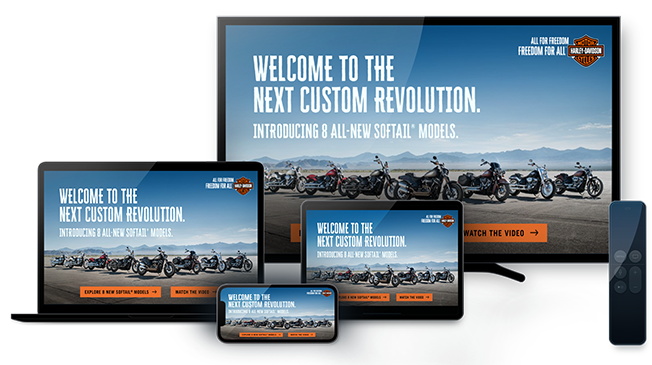Advertising Week 2025: The End of the Frankenstack and the Rise of Composable Ad Tech

Amid the AI hype and retail media buzz, one shift cut through louder than any panel: the industry finally admitted the Frankenstack doesn’t work. The era of bolted-together ad tech is coming to an end, and composable ad tech platforms are taking its place.
Across sessions, “integration” no longer meant acquisitions or closed systems. It meant freedom. Freedom from duct-taped platforms that slow time to market. Freedom from paying platform fees that don’t add value. Freedom to plug in only the tools that matter and orchestrate them through AI and automation that actually deliver.
That is the philosophy behind the Infillion Platform, a composable, modular system that unites data, media, creative, and measurement under one roof. Infillion has long championed the idea that marketers should be able to connect what they want, when they need it, across the open internet. The week’s discussions confirmed that the rest of the industry is catching up.
Composability Takes Center Stage
At Partnering in the Composable Marketing and Media Ecosystem, executives from Snowflake, GrowthLoop, Dentsu, Newton Research, and Snap made it clear that composability has replaced consolidation as the new performance driver. The focus is no longer on who owns the most technology but on who can make it work together fastest.
Dennis Buchheim of Snowflake described the benefit clearly: “The flexibility of composable architecture allows teams to find and fix issues much faster than in a traditional pipeline. It is about connecting structured and unstructured data together so insights can flow end to end.” That flow, he said, turns data architecture into a competitive advantage rather than a technical burden.
Dentsu’s Gerry Bavaro provided a tangible example. His team reduced setup time fourfold, processing time sixfold, and ID matching time by 80 percent for a major QSR client after moving 40 million customer records and 200 million orders into a composable environment. “Speed translates directly to effectiveness,” he said. “You cannot move at the speed of culture or context without systems that are composable and high powered.”
Snap’s Elena Bond added that composability is changing how collaboration works. “Clean rooms and shared environments let advertisers and publishers finally communicate bidirectionally,” she said. “It is a new era of interoperability.”
Infillion’s platform was built on the same principle. Each component, from creative automation to omnichannel delivery, connects through open APIs and interoperable identity. The approach mirrors what panelists described: a move away from monolithic systems toward flexible frameworks that scale without lock-in; the same foundation that powers MediaMath, Infillion’s DSP.
Together, these discussions marked an industry-wide awakening. Composability is not only a data strategy but a cultural one. It requires companies to let go of control and embrace connection as the path to faster, smarter growth.
From Composable to Intelligent: How AI and Automation Are Redefining Ad Tech
That same philosophy continued in The AI Dividend, where leaders from Mars, People Inc., and NVIDIA explored how composability becomes exponentially more powerful when paired with intelligent automation.
Panelists discussed how agentic AI is beginning to build, tune, and deploy models autonomously, closing the gap between insight and execution.
Gülen Bengi, CMO/CGO of Mars explained, “We are democratizing the ability to ask questions of data. Teams no longer wait in line for analytics. They can interact with the data directly, with governance and control in place.”
Jamie Allan, NVIDIA, reinforced the importance of open systems. “We are moving from using AI to generate content to using AI to uncover value that was never visible before,” he said. NVIDIA’s long-term investment in parallel computing provided the perfect metaphor for how open, composable infrastructure accelerates innovation.
Those insights align with Infillion’s own evolution and thinking behind agentic AI. By combining composable architecture with AI-driven orchestration, the Infillion Platform allows marketers to act on insights in real time. Whether optimizing omnichannel campaigns or adapting creative dynamically, intelligence and composability work together to create a unified system that learns, scales, and performs.
The New Standard of Composability
The first day of Advertising Week 2025 made one thing clear: the Frankenstack is finished. The next era of marketing will belong to platforms that are composable, intelligent, and transparent. The most forward-thinking players are not trying to own every piece of the ecosystem. They are building systems that connect the right ones, faster.
Infillion is proving that open, intelligent, and composable systems aren’t the next wave of ad tech, they are the standard for what modern marketing should be.
Less patchwork. More performance. More control.
Subscribe to our blog:
Related Posts:

From Patchwork to Powerhouse: How Independent Agencies Buy Media Today
For years, independents were told they couldn’t match the scale or sophistication of the holding companies. That story is over. Our latest research, The Independent Agency Blueprint, shows independent agencies are blending old-school relationships with new-school...

How AI Is Leveling the Playing Field for Independent Agencies
In July, we brought a group of ten independent agency leaders to Infillion HQ for a wide-ranging discussion about their pain points, challenges, and opportunities. Within minutes, one topic dominated: AI’s growing role in reshaping how agencies work, pitch, and...

Holiday Expectations vs. Lived Experience
Forecasting holiday sales and performance is tricky. One needs to infer conclusions by, say, mid-summer at the latest, then wait six months or so to verify one's accuracy. Instead, let’s take a look back. Let’s compare 2023 narratives to their 2024 realities. From...
Let's Connect

